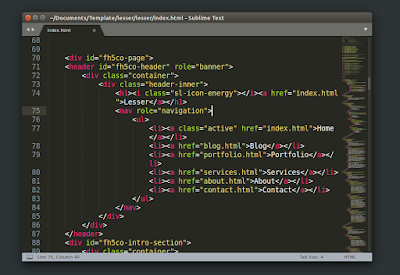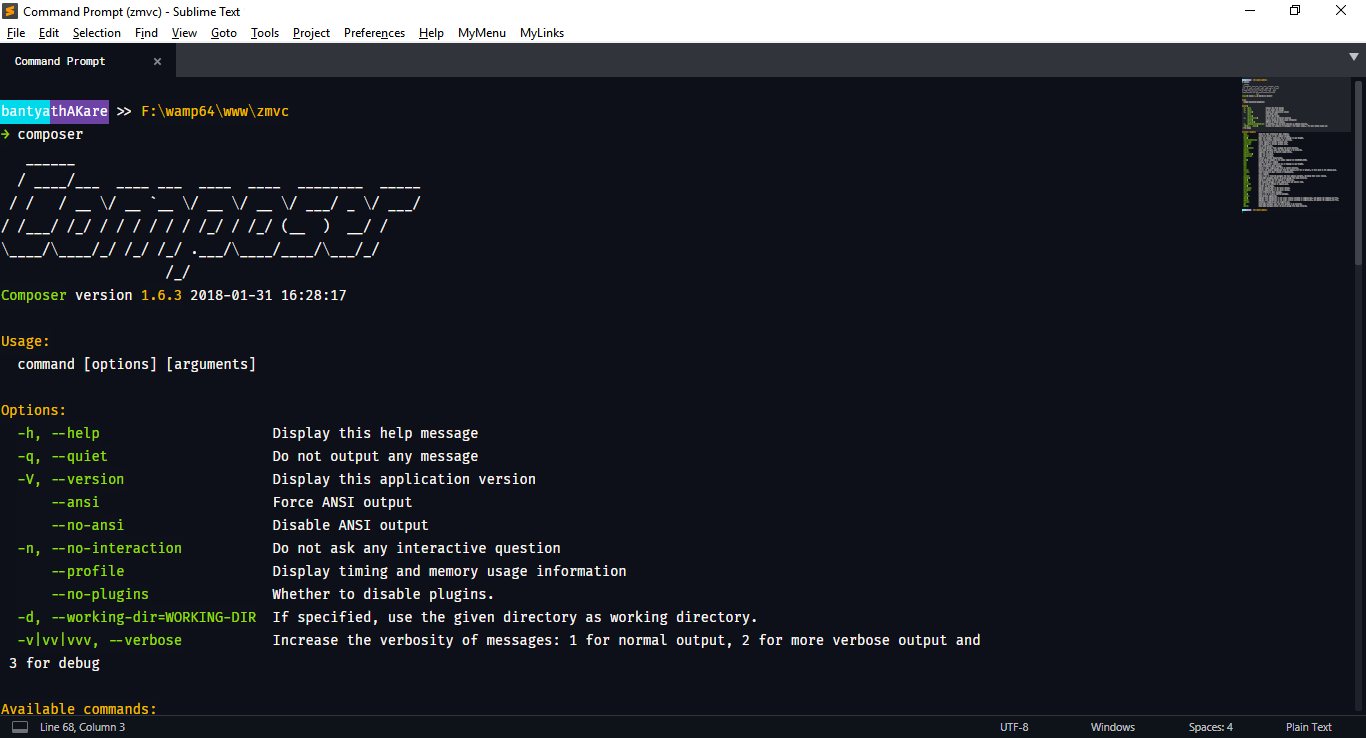- Terminal In Sublime Text Github
- Sublime Text Show Menu Bar
- Open Sublime From Terminal
- Sublime Text Terminal Plugin
- How To Use Terminal In Sublime
Setup
Some operating systems and installation methods will require a configuration change to make subl available on the PATH. Freerip mp3 converter.
Windows
On Windows, the command line helper is subl.exe. To use this from the Command Prompt or Powershell, the Sublime Text installation folder needs to be added to the Path environment variable:
- Using this approach (the ppa one) to install Sublime Text would allow you to open it from the terminal using subl or sublime-text without the need of additional configuration. Improve this answer. Follow edited Apr 13 '17 at 12:25.
- – opens the current directory in Sublime; sublime filename – opens a file where filename is the file to be opened; sublime foldername – opens a folder where foldername is the folder to be opened; And there you have it – you can now open any file or folder in Sublime straight from the Terminal.
Terminal In Sublime Text Github

Sublime Text includes a command line tool, subl, to work with files on the command line. This can be used to open files and projects in Sublime Text, as well working as. You can make a build system to Run python code in the terminal where you can give input to the program from STDIN. This is the build system I have created for sublime text 3. Go to Tools-Build System.

Windows 10
Show instructions for: Windows 8, Windows 7- Open the Start Menu and type environ
- Select the item Edit the system environment variables
- Click the button Environment Variables at the bottom of the System Properties dialog
- Select, or create, the
Pathenvironment variable in the appropriate section:- For the current user, select
Pathin the User variables for {username} section - For all users, select
Pathin the System variables section
- For the current user, select
- Click the New button and add an entry with the Sublime Text installation directory
- 64bit installs are typically in C:Program FilesSublime Text
- 32bit installs on a 64bit version of Windows will be in C:Program Files (x86)Sublime Text
- 32bit installs on a 32bit version of Windows will be in C:Program FilesSublime Text
Windows 8
Show instructions for: Windows 10, Windows 7- Press the Windows Key and type environ
- Select the item Edit the system environment variables
- Click the button Environment Variables at the bottom of the System Properties dialog
- Select, or create, the
Pathenvironment variable in the appropriate section:- For the current user, select
Pathin the User variables for {username} section - For all users, select
Pathin the System variables section
- For the current user, select
- In the Variable value input, add an entry with the Sublime Text installation directory. If there is an existing value, add a
;before the Sublime Text directory.- 64bit installs are typically in C:Program FilesSublime Text
- 32bit installs on a 64bit version of Windows will be in C:Program Files (x86)Sublime Text
- 32bit installs on a 32bit version of Windows will be in C:Program FilesSublime Text
Windows 7
Show instructions for: Windows 10, Windows 8- Open the Start Menu
- Right-click on Computer and select Properties
- Click on Advanced System Settings in the left-hand sidebar
- Click the button Environment Variables at the bottom of the System Properties dialog
- Select, or create, the
Pathenvironment variable in the appropriate section:- For the current user, select
Pathin the User variables for {username} section - For all users, select
Pathin the System variables section
- For the current user, select
- In the Variable value input, add an entry with the Sublime Text installation directory. If there is an existing value, add a
;before the Sublime Text directory.- 64bit installs are typically in C:Program FilesSublime Text
- 32bit installs on a 64bit version of Windows will be in C:Program Files (x86)Sublime Text
- 32bit installs on a 32bit version of Windows will be in C:Program FilesSublime Text
Mac
To use subl, the Sublime Text bin folder needs to be added to the path. For a typical installation of Sublime Text, this will be located at /Applications/Sublime Text.app/Contents/SharedSupport/bin.
Bash
Sublime Text Show Menu Bar
If using Bash, the default before macOS 10.15, the following command will add the bin folder to the PATH environment variable:
Open Sublime From Terminal
Zsh
If using Zsh, the default starting with macOS 10.15, the following command will add the bin folder to the PATH environment variable:
Linux
If Sublime Text is installed via one of the Linux Package Manager Repositories or a package, a subl symlink will automatically be installed into the /usr/bin/ directory.
If installing from a tarball, the sublime_text executable should be symlinked to subl, with a command such as:
The exact details of the symlink command will depend on the installation location. Most default PATH environment variable values should contain /usr/local/bin, so no further commands should be necessary.
I adore Sublime Text, I'm often jumping to other editors to use an integrated terminal but not anymore! A new package called Terminus written by Randy Lai adds support for an integrated terminal panel and a view! I cannot understate how awesome this is! I've been trying to find a package to add terminal support for years!
Terminus is heavily inspired by TerminalView another Sublime Text package that adds a terminal to a view.
What I love about Terminus is you can add a toggleable panel or a view.
Sublime Text Terminal Plugin
Install

To install it simple open Package Control and search for Terminus
Usage
How To Use Terminal In Sublime
There are default key bindings
Steve. About7 to xp pack. I prefer to use ctrl+` to toggle you can easily change them with custom key bindings:
This toggles the panel but also opens in the current root folder
I also like to have the option to open Terminus in a view to this time using alt+`
